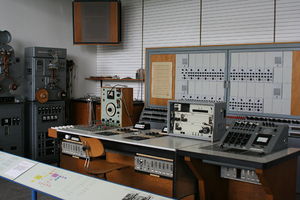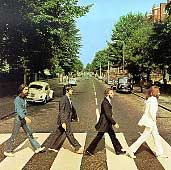Rock and Roll and the Recording Studio
Rock and roll has had a great importance not only for music, but also for the technology of sound recording. Before rock became popular, most recording equipment was used to capture sound as accurately as possible, or at least to create the illusion of a live performance. The whole concept of "high fidelity" was built around the drive to deliver music in the home that was "true" to the way it would sound if it were heard live in the studio or in a concert hall. Rock musicians helped change all that.
In 1950s, when rock music first appeared, some performers insisted on creating a "gritty" sound in the studio with drums, electric guitars, and vocal tracks. Often that meant intentionally overloading microphones and amplifiers to produce a distortion of the signals. The result was a harsher, more raw sound that seemed to suit rock music.
By the 1960s, not only had the intentional use of distortion become a staple of rock recordings, but now musicians and engineers began manipulating sound in the studio to an extent never heard before. Using advanced electronic circuits and multi-track tape recorders, they began using technology to create sounds that could never be produced in a live performance.
A landmark in the creative use of recording equipment to invent new sounds was the Beach Boys' 1966 album Pet Sounds. The band’s main songwriter, Brian Wilson, had begun recording "little bits" of music by himself even before the Pet Sounds sessions, with the idea that he could work them together into a whole song with the group later. Some of this "cut and paste" method was evident on the album, and it was fully exploited on songs like "Good Vibrations," which appeared a little later. One of the most interesting aspects of Pet Sounds was the way multi-track tape recorders were used to create multi-layered musical compositions. Interestingly, few of the records mixed by Brian Wilson were done in stereo—partly because he was deaf in one ear. While the use of overdubbing and stereo effects was already widespread by the mid-1960s, the Beach Boys were able to turn the studio into a creative tool. Wilson's imaginative use of technology was also evident in the instruments he played, which included not only the standard tools of rock and roll—guitars, drums, and keyboard, but also accordion, bicycle bells, banjo, kazoo, glockenspiel, Theremin, a water jug, and even barking dogs.
Another important landmark was the Beatles’ 1967 album, Sgt. Pepper’s Lonely Hearts Club Band. The Beatles got their start in England in the early 1960s recording catchy, American-influenced pop songs. By the later 1960s, they (like many other musicians) began to experiment with the sounds they could record in the studio. Recording of the album began in Studio 2 at Abbey Road on 1 February 1967. The album's writers and main vocal singers were John Lennon and Paul McCartney, while the producer was long-time Beatles associate George Martin. Recording engineers Geoff Emerick and Richard Lush aided Martin. The Beatles spent 129 days in the studio beginning in November 1966. This was an incredible amount of time in a day when many songs were arranged and recorded in a few hours. Much of that time was spent recording and rerecording parts of songs in order to create a lush, multi-layered sound. That sound was evident on tracks like “Lucy in the Sky With Diamonds,” one of the songs that helped set the mood for the trance-like, experimental days of the late 60s.

